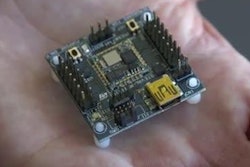In this Tuesday morning talk, Dr. Seok Hahn of Yonsei University College of Medicine in Seoul will share results from a study conducted to determine the technology's effectiveness for this application in asymptomatic patients and those with suspected medial epicondylitis.
The study included grayscale sonography and compression-based real-time color sonoelastography imaging from 47 elbows in 41 patients performed between July 2016 and March 2017. Patients were divided into two groups: those with suspected medial epicondylitis and those with no symptoms.
Using a three-point visual scale, a radiologist reader evaluated grayscale ultrasound images for swelling, hypoechogenicity, calcification, and tear, as well as the elastographic grade from the sonoelastography imaging. Hahn's team then compared the sonographic findings, elastographic grade, and strain ratio between the two groups.
Of the 41 patients, 13 (16 elbows) were diagnosed with medial epicondylitis. Swelling, calcification, and tear on regular ultrasound showed no significant differences between the two patient groups, but hypoechogenicity, elastographic grade, and strain ratio showed significant differences (p < 0.001), the researchers found. The areas under the receiver operating characteristic curve were 0.85 for elastographic grade and 0.98 for strain ratio.
"When evaluating clinically suspected medial epicondylitis and the grayscale ultrasound finding [does not offer a satisfactory diagnosis], real-time sonoelastography will be helpful," they concluded.



















